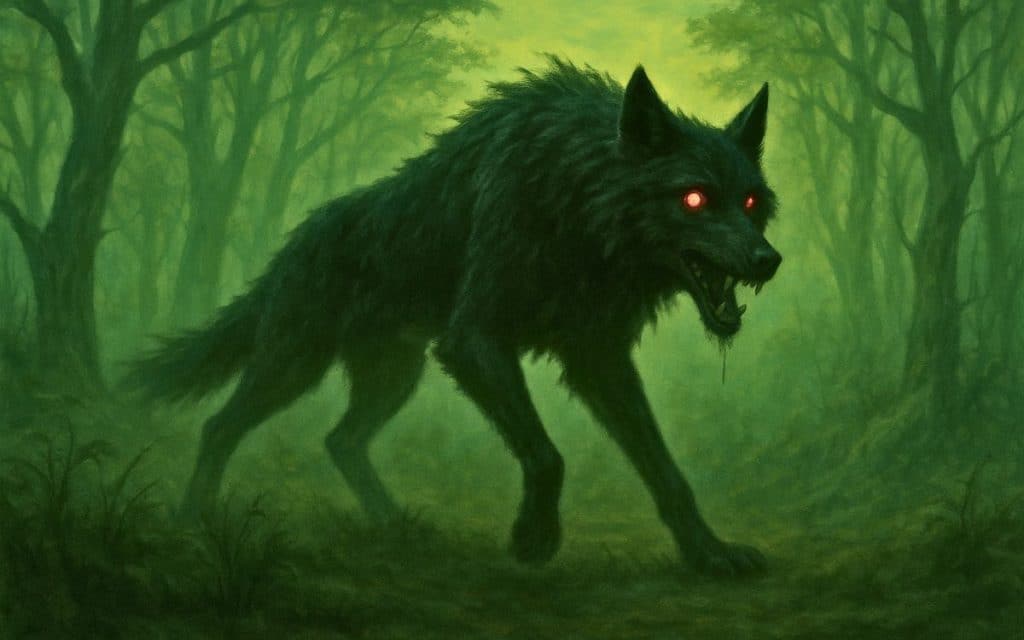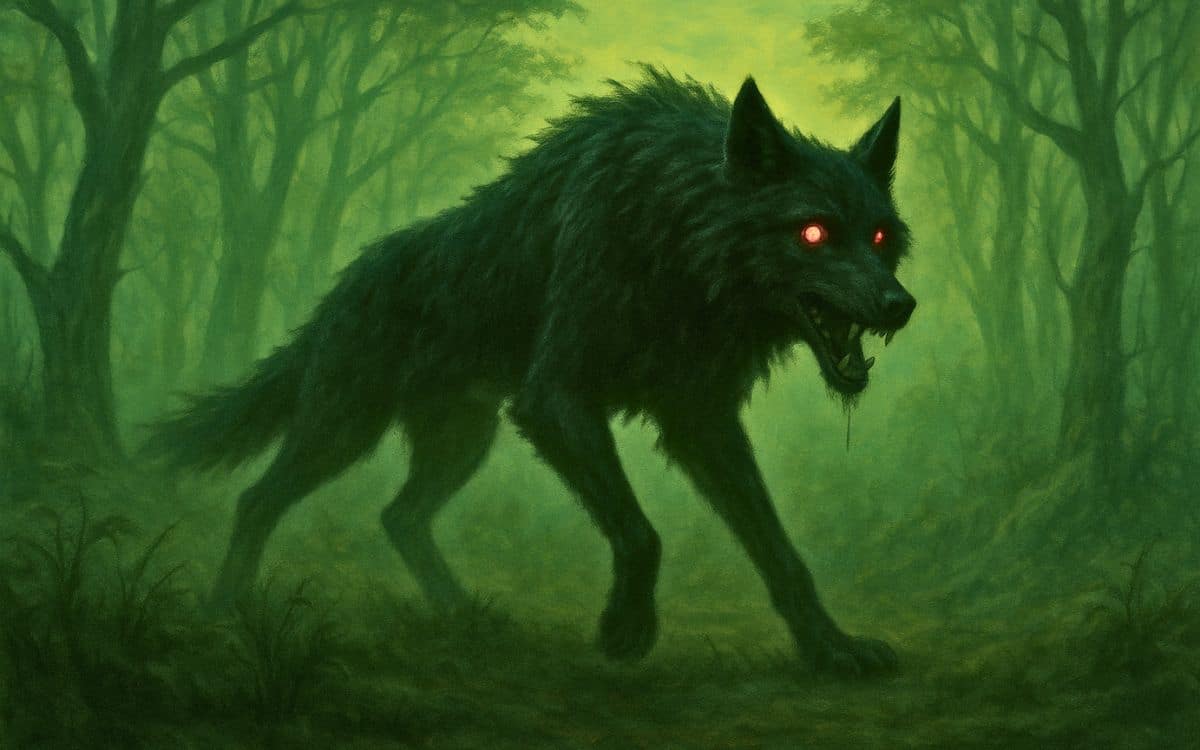Ayrshire’s haunted reputation is epitomised by the tragic legend of the Black Dog, a spectral hound born from guilt, myth, and our deep bond with man’s best friend, writes guest writer PIERCE MILLER

It might not be an exaggeration to claim that Ayrshire is one of the most haunted places in Scotland. Ayrshire’s rich history includes myths and legends, ranging from Archibald the Wicked of Culzean, a man so dastardly the devil attended his funeral, to the white worm of Dalry (possibly inspiring Bram Stoker’s lesser-known novel). Yet one tale has been a source of heartbreak for everyone who hears it -the Black Dog of Ayrshire.
Legend has it that a loyal hound defended its master’s children from a wolf. Yet, the wolf managed to kill one of the children. When the master returned, he saw blood on the snout of the animal and promptly blamed the dog for the child’s death. The master slew the dog, and ever since, sightings of the animal have been reported. A great slavering beast that wants nothing more than to take revenge for its unjust death. And who can blame the poor fella? It makes one wonder just how many of the sighted black dogs are victims of a cruel master, cursed to roam these isles in search of bloody justice.
Ayrshire’s Black Dog
I first heard the story as a child in primary school (it was a different time), and it’s a legend that’s stuck with me, mostly because I had just got my first dog and was more than a little incensed by the hasty master’s actions. One thing that strikes me about this story is its similarity to the tale of Gelert. A Welsh legend.
Wherein Prince Llywelyn is the one to slay Gelert after the dog protects the prince’s child. That story doesn’t mention spectral canines, but it bears more than a passing resemblance. It’s a story that highlights our special relationship with man’s best friend and the guilt of harming an innocent. Is it that desire to see a wrong righted that brings forth the black dog of Ayrshire?
There’s also the story of Wallace’s heel well in South Ayrshire, where the eponymous William Wallace managed to kill and injure several English soldiers before fleeing capture. It was clear to Wallace that the dogs the English were using to track him would eventually catch up, so, as he was running, he jumped from the path onto the banks of the river Ayr, the weight and strength of his landing leaving a permanent imprint.
This is an example of a petrosomatoglyph, an impression in rock that resembles a human or animal body part, most often the feet. Could the black dog of Ayrshire be the spirits of the long-dead hounds still searching for the legendary figure William Wallace?
The Black Dog in Scotland
It is worth mentioning that this isn’t the only black dog associated with Scotland. Cu Sìth sightings are not uncommon. Then, further south in England, there are more black dogs such as the barghest in Cumbria and the black shuck in Anglia. To some, these hellhounds are a grim omen, portending death; to others, they are merely a guide, a psychopomp that ushers people to the other side.
Some accounts attest that they have a sulphurous smell, likely associating them with the devil, as that scent is commonly attributed to demons. Given that hell is where the sinners go, a place of punishment and torment, this theme of the black dog as a representation of guilt grows stronger. As for their role as a guide into the afterlife, you need only consider their roaming grounds.
There are many forest trails in Ayrshire that a weary traveller can get lost in. It could be argued that the lush greenery is one reason to visit, yet this is the exact environment that the black dog prefers and where most of the sightings have taken place. Forests are liminal spaces, that is, places of transition, stuck between two worlds.
Given the black dogs’ association with death, the transitional nature of their habitat could be intentional. Perhaps the black dog of Ayrshire haunts these places not to seek revenge but to guide us through the transition, from one trail to another, from life to the otherworld.
My perspective is that we’ve done with the black dog what we do with our pets, we’ve projected. We’ve anthropomorphised an animal; we want revenge for the black dog. That guilt and desire for justice have evolved over the years, giving rise to the myth. Whether this creature truly roams the forests or not, its tragic nature has haunted my mind for the past eighteen years.
PIERCE MILLER is a student mental health nurse with an extracurricular interest in the paranormal and its intersection with human psychology. Using these passions as fuel for his own short story and novel projects. These include genres such as science fiction, fantasy and horror and all with an especially dark twist. Pierce lives in Ayrshire with his two dogs, the only company he can stand.



